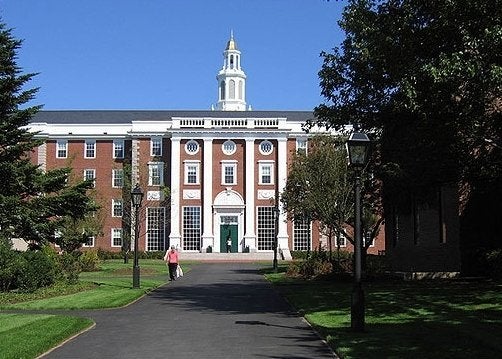
This is the time of year when high school seniors across the country (and around the world) are opening their mail hoping for what, back in the day, was the thick envelope from one's top choice school. Many will do the opening electronically, but the feelings of hope, anxiety and anticipation will be the same. In the next weeks students invited to join the class of 2013 will be comparing notes, preparing to revisit campuses, and trying to imagine themselves thriving on a campus often far away from home.
Of course, just being in a position to make a decision about which school to attend is a luxury, and for a select group of high school seniors an enormously valuable college experience is being made available without charge. The highly selective schools (like Wesleyan where I work), which remain "need blind" (accepting students regardless of their ability to pay) devote a considerable part of our operating budgets to financial aid. For those paying full fare, tuition and fees for an academic year are north of $50k, but at the most selective schools somewhere between 40-60 percent of the students receive significant financial support. At Wesleyan, our average grant is around $30k, and there are schools that can afford to be even more generous to those students who are fortunate enough to get in.
For many of those heading off to college it is the public university that will seem the economically sensible choice. Large state schools have reported record numbers of applicants, even while in many parts of the country state legislators are cutting the budgets of their flagship campuses. In my home state of Connecticut, we recently saw students at the main state campus asking for higher tuition increases to make up for the inadequate funding from the state. Students asking for higher tuition? These are strange times.
Today's New York Times reported that many of the Ivy League Schools continue to experience an increase in applications. Some of the highly selective liberal arts colleges in rural New England, by contrast, have seen declines in their applicant pools. At Wesleyan University, where our entering class will number under 750, we have experienced our largest surge in applicants ever -- more than 22%. Like many of our peer institutions, we have expanded our financial aid budget in order to make it possible for qualified students to attend. And we are also trying to cut discretionary spending to focus our resources on core academic programs. Like all universities, we are juggling selectivity, affordability, costs and access in an effort to sculpt an entering class ready to learn from the faculty as well as from one another.
The "class sculpting" that goes on at liberal arts oriented colleges and universities is from the administrative perspective a luxury of its own in these days of cutbacks and underfunded state campuses. Many, many qualified students are rejected at a place like Wesleyan, but I take some solace in the fact that the US higher education system offers an extraordinary number of access points to a high quality experience -- from fine community colleges to sophisticated public research universities to distinctive private institutions offering an array of learning opportunities in and outside of the classroom. Higher Ed, of course, is just one part of the entire array of teaching institutions. It has been clear for some time that we need to do a better job of preparing our high school graduates to get the most out of the range of choices available to them. Too many of our colleges are re-teaching high school rather than expanding the horizons for our undergraduates.
In the coming weeks thousands of students across the country will be looking at the equivalent of those thick envelopes and asking: Which school can I afford, and which school will be the place where I will really thrive for the next four years? Many of us will be asked to offer advice to friends and relatives. Where will I (or where will my son or daughter) be happy? Which school will better prepare me for life after college? Our higher education sector recognizes that young people learn in a wide variety of ways. Some people want a very structured environment in which their education will be institutionally directed. Others want a homogeneous climate in which they can find other people like themselves working toward similar goals. Some will want large campuses that function like mini-cities, while others will want small residential communities. In this economic climate, students (and their families) will want to know how the years in college will enable them to enter the work force. Weighing the relative advantages of the schools that sent those thick envelopes may be a luxury, but it is a momentous one.
It's my hope that students choose schools at which they can learn how to be more effective in whatever field they decide to apply themselves, and in this process also discover core things that they really love to do. That's the best way for them to gain the ability to continue doing those things about which they are most passionate long after they receive their diplomas. Graduates who have become effective in doing what they find personally satisfying are the ones we may expect to add the most value to the economy and the culture of the future.
